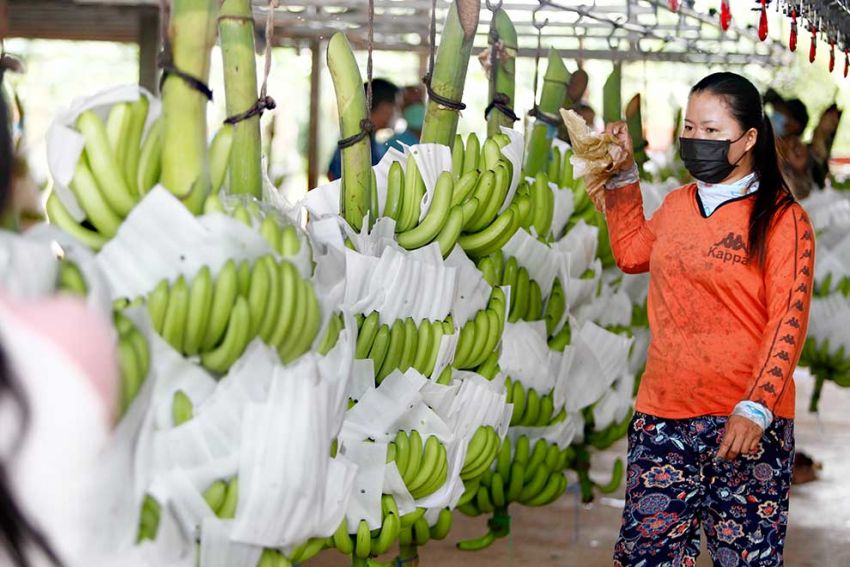
Cambodia earned nearly $3.070 billion from agricultural exports in the first 10 months of this year, preliminary data based on exporters’ invoices released by the Ministry of Agriculture, Forestry and Fisheries showed.
Future sales to the regional markets of China and South Korea are widely expected to be buoyed by duty-free access under key trade pacts that took effect this year.
In January-October, milled-rice exports were to the tune of $435.408 million, weighing in at 509,249 tonnes, marking a 10.67-per-cent or 49,080-tonne year-on-year increase. By contrast, paddy exports amounted to $492.903 million, or 2.440 million tonnes – down 8.27 per cent or 219,878 tonnes.
Non-rice items clocked in at $2.142 billion or 4.670 million tonnes, up 10.63 per cent from 4.221 million tonnes, the ministry reported, listing major items as: tapioca starch and cassava chips and pulp; raw and processed cashew nuts; corn kernels; mung beans and soybeans; fresh bananas; fresh and dried mangoes; oil palm (in fresh fruit bunches, or FFB); peppercorns; tobacco; and “assorted vegetables”.
The “assorted vegetables” category does not include a number of popular crops that may be considered vegetables in the culinary sense. Notable examples of excluded items are: legumes including mung beans and soybeans; grains such as corn and rice; spices like peppercorn and chilli peppers; and cassava.
Speaking to The Post on December 21, Cambodia Chamber of Commerce (CCC) vice-president Lim Heng suggested that overall growth cultivation has continued to grow each year, which he said has created new opportunities for export-oriented initiatives.
Such examples include free trade agreements (FTA), namely the bilateral deals with China and South Korea as well as the multilateral Regional Comprehensive Economic Partnership (RCEP), which have all improved access to international markets for Cambodian-made agricultural items, he said.
An FTA is an international treaty between two or more economies designed to reduce or eliminate certain barriers to imports and exports among them, generally while safeguarding safety, security, health and other legitimate regulatory objectives. Such a pact can also serve to facilitate and promote greater economic ties among signatories in areas such as investment and intellectual property protection.
Heng added that the preferential tariff treatment provided to Cambodian agricultural goods under the FTAs has drawn in more foreign investment and thereby boosted domestic cultivation and exports.
“I’ve also seen that our agricultural products today are being made in accordance with international destination markets, raising the quality of the items tendered for export,” he said.
For authentic article, please read here
Author: May Kunmakara
Source: The Phnom Penh Post
Publish Date: 21 December 2022